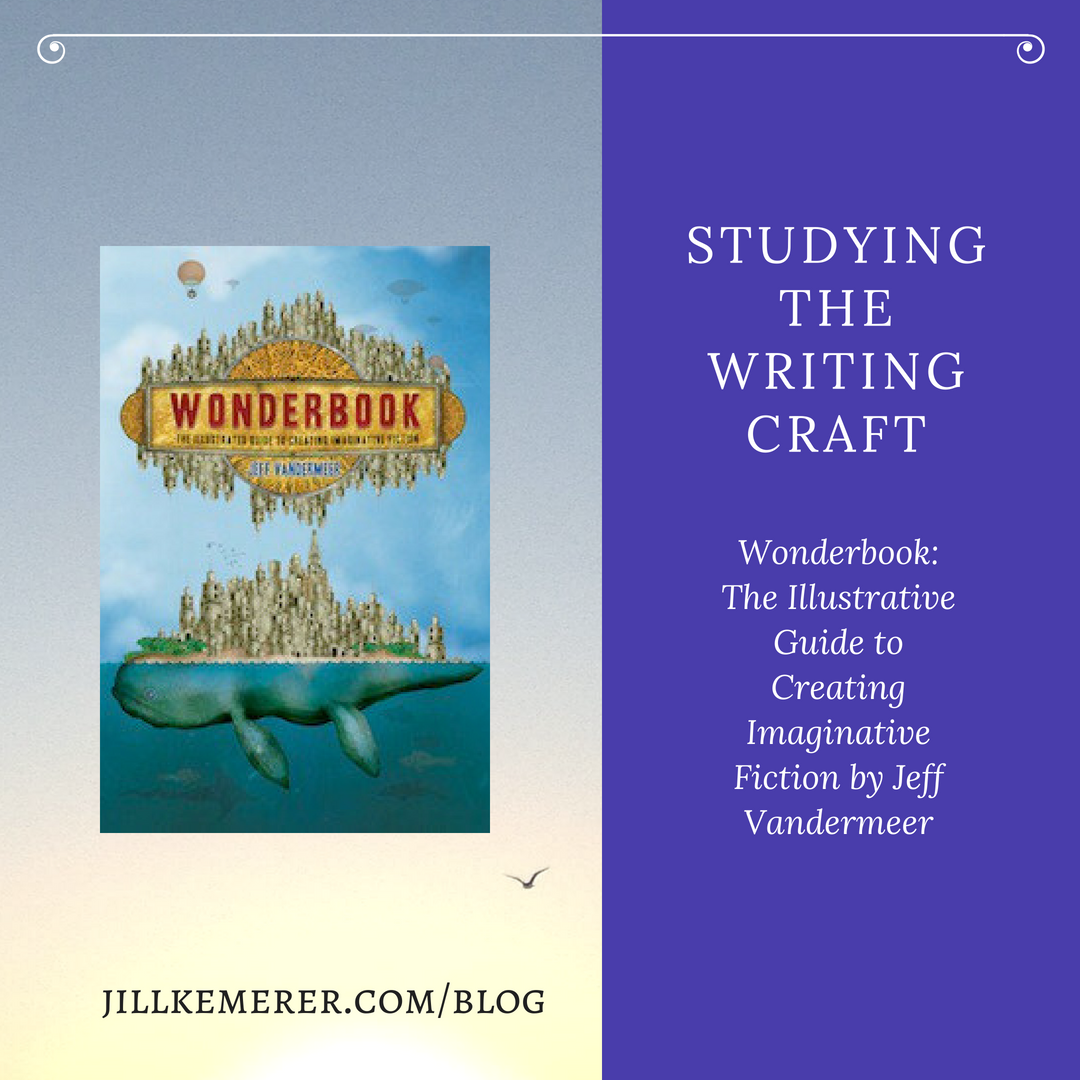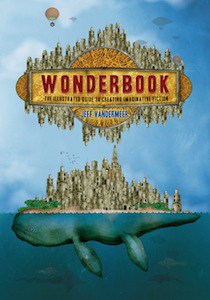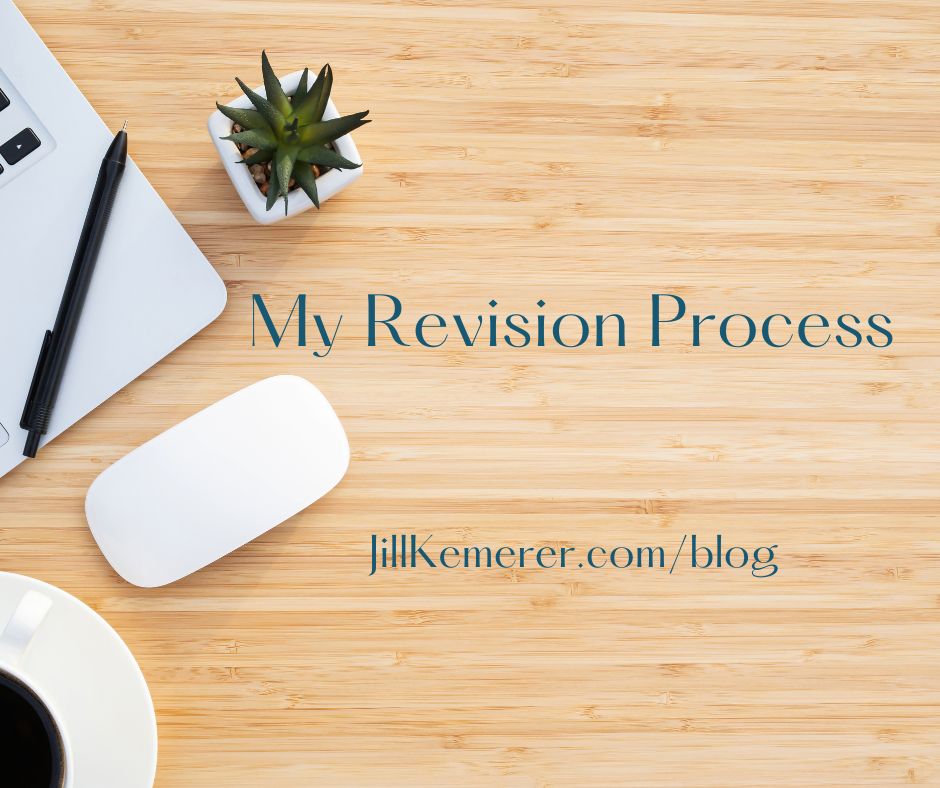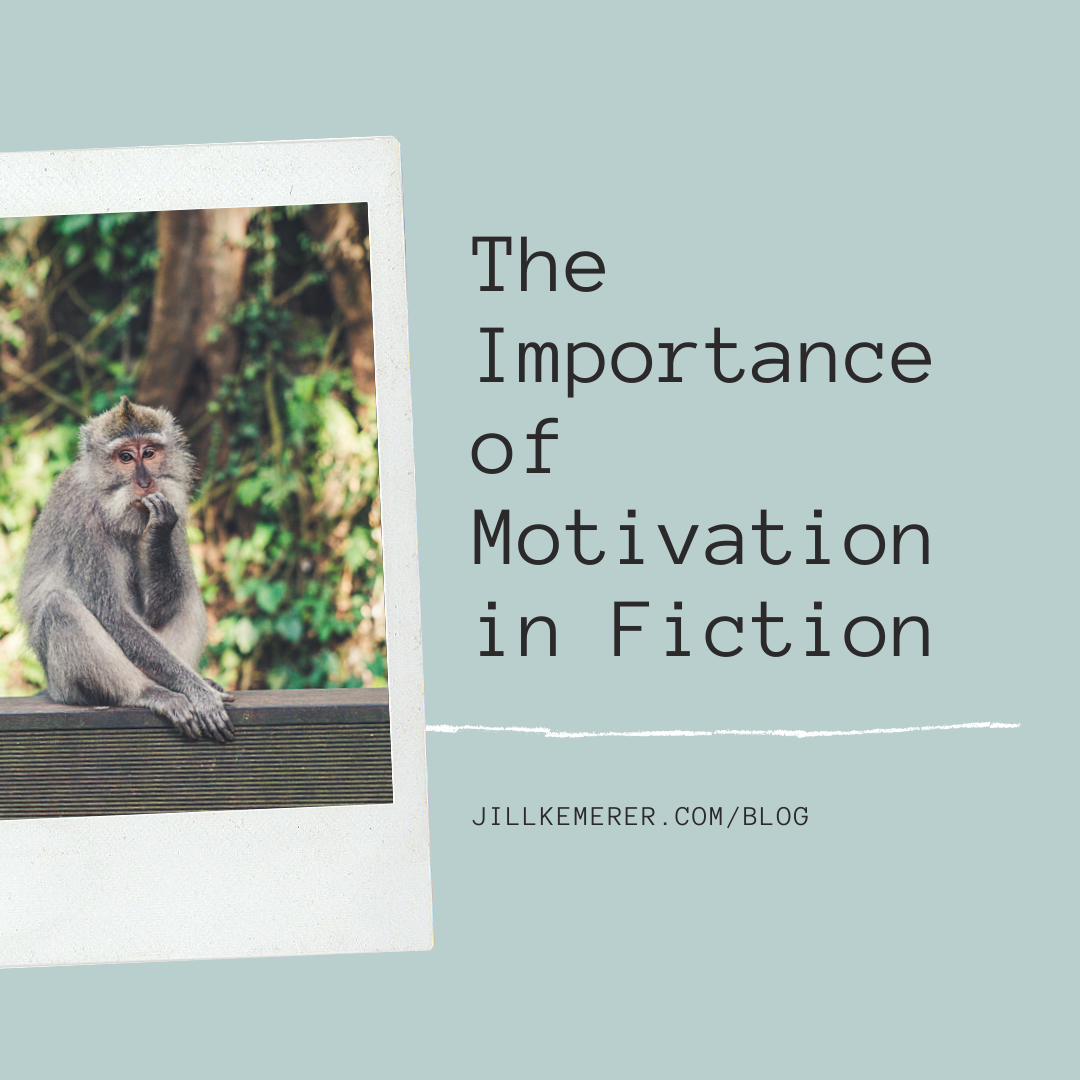If you spend any time searching for freelance editors, you'll see several different types of…
Discussing Wonderbook: The Illustrated Guide to Creating Imaginative Fiction
I was at the library last week–shocking, I know–and came across a delightful book in the new nonfiction section. Wonderbook: The Illustrated Guide to Creating Imaginative Fiction by Jeff Vandermeer has an engaging, whimsical cover, and I had to pick it up. With stunning graphics, author essays, and entertaining chapter subheadings, Wonderbook was sure to be right up my alley.
I haven’t had a chance to dive into it in depth, but I’ll be taking it chapter-by-chapter until I finish. I have a feeling this will be one I buy for my writing-craft shelf. One of my goals this year is to consistently study and apply writing craft techniques. This spring I brushed up on several chapters of Donald Maass’s The Fire in Fiction, a book I’ve read more than once. It’s really good. And I’m excited to find other craft books to return to again and again.
One thing I’ve noticed over the past few years is that more nonfiction books are being printed on thicker, glossier paper with ample photographs and illustrations. I’m drawn to these books. Visual aids always help me! Anything that breaks up the text keeps me engaged–bullet points, subheadings, graphics, charts, you name it. Wonderbook is full of them.
Here’s the cover of Wonderbook.
This all-new definitive guide to writing imaginative fiction takes a completely novel approach and fully exploits the visual nature of fantasy through original drawings, maps, renderings, and exercises to create a spectacularly beautiful and inspiring object. Employing an accessible, example-rich approach, Wonderbook energizes and motivates while also providing practical, nuts-and-bolts information needed to improve as a writer. Aimed at aspiring and intermediate-level writers, Wonderbook includes helpful sidebars and essays from some of the biggest names in fantasy today, such as George R. R. Martin, Lev Grossman, Neil Gaiman, Michael Moorcock, Catherynne M. Valente, and Karen Joy Fowler, to name a few.
Purchase a paperback copy of Wonderbook: Amazon
***
Since my laziness factor can get REALLY high, especially in the summer when beach reads are calling my name, I schedule study time. If a craft book has long chapters, I will tackle a portion of a chapter per session (I aim for three sessions a week). If the chapters are short, I study a chapter at a time. I write out notes on paper then type them into a digital notebook (I use OneNote) for easy access. Sometimes a book doesn’t grab me, and I give up on it, but most of the time, I get a lot out of the craft books I read.
One nice thing about Wonderbook is that it has a dedicated website with gobs of extras. You can find out more at www.wonderbooknow.com.
How do you study the writing craft? What are your favorite resources? Please share!
Have a terrific day!






I enjoy learning from other writers. Jill, you always give me great encouragement and inspiration. I appreciate you so much. Thank you for your words of wisdom.
I do too, Melissa. I feel like I’ve learned more about writing and marketing from other writers than anything else. Enjoy your week!
this looks really interesting – may have to pick it up!
It’s visually appealing!